
Sjoerd Knibbeler/Platform BK
Horizontal Allies
About 10 years ago, the Dutch cultural sector was shocked by the abrupt announcement of severe budget cuts. These cuts were part of a larger and ongoing neoliberal agenda that since the early 1980s has been determined to kill off the welfare state.
The budget cuts and the vicious rhetoric that accompanied them made at least two things clear: (1) culture was no longer seen as essential to an open democratic society – at least not to the extent that it should be publicly funded; and (2) as a consequence thereof, cultural workers had been growing poorer for quite some time.
This led to an awakening in the Dutch cultural sector. Several protests were held, and in 2012, Platform BK was launched in order to harness the collective energy of the visual arts field. The goal was to provide a counter narrative to the dominant neoliberal one and to look for ways to reimagine the position of the visual arts within society.
In the years since, Platform BK has become a fixture in the Dutch art world, and has helped develop a series of initiatives to professionalise the arts sector and codify good practices, such as the artist’s fee guideline and the Fair Practice Code. As a co-founder and now board member, I helped develop the strategy that still guides much of the thinking of Platform BK: how can we, as artists and cultural workers, use our skills and privilege to reformulate our own socio-economic position and, by doing so, also help other precarious workers? How can we cultivate a notion of care that means more than just taking care of our own?
Rune Peitersen
20 mrt. 2022 • 12 min
Skills and Privileges
From the outset, it was clear to us that although cultural workers in general are in an ever more precarious situation, in some ways the cultural field differs from other precarious groups.
Generally speaking, cultural workers are highly educated and come from middle- to upper-class backgrounds. Given our practical and theoretical education, ‘we’ have an above average understanding of image and narrative construction. We understand how to tell a story, analyse an image, and contextualise a problem. We can deconstruct, reconstruct, and add value to a narrative, both ethical and monetary.
These are extremely valuable skills in a world obsessed with imagery, symbolism, and branding. With our collective knowledge and skills, we therefore have the (visual) language, creativity, and insight to address not only artistic but also socio-economic issues, and to put these on the (political) agenda. Through the historical institutions and the networked construction of the art world, we even have access to the upper echelons of society – if not directly to their finances.
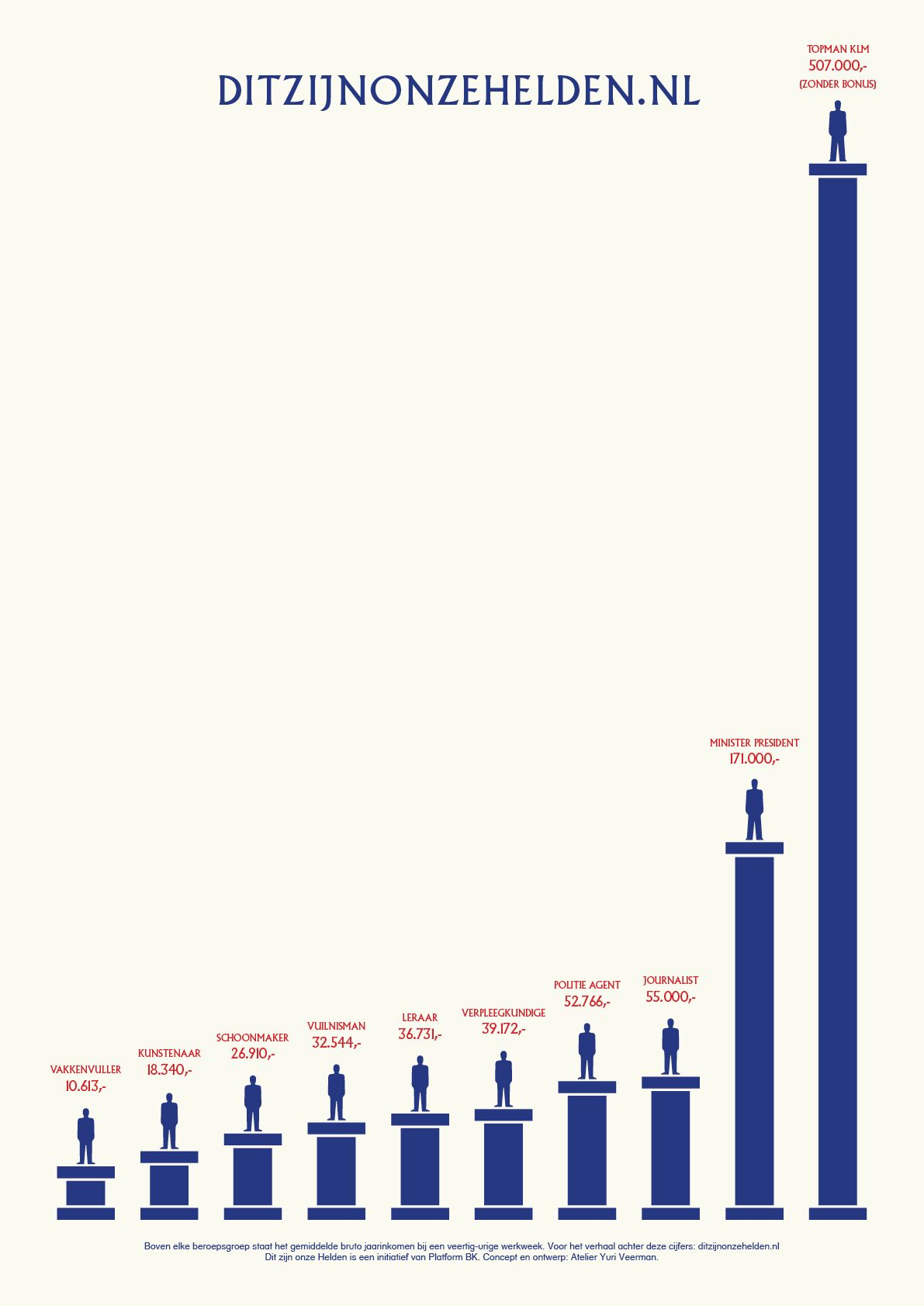
Poster: Yuri Veerman / Platform BK
This level of skill and access is seldom available to other precarious groups. A cleaner or postal worker rarely gets an opportunity to drink white wine with the director of their company or organisation, or to talk about their observations in life or show off their creative skills. This sets cultural workers apart from other precarious workers. In this respect, we’re more privileged and have more agency – perhaps not individually, but as a broad field. These advantages are often exploited by detractors to feed into a derogative narrative of ‘cultural elitism’.
Does this somewhat privileged position mean that the cultural field shouldn’t fight for the rights of its workers and the advancement of its particular working conditions? Of course not. There are many structural problems within the field, and these should be addressed. However, since many of our problems are shared by other sectors, we have an opportunity to join a larger fight for the rights and interests of all workers, recognizing that most of our issues have the same foundation: massive and growing inequality due to decennia of unchecked capitalism. If we’re serious about care, we need to look at and change the bigger picture, not just our corner of it, so that our actions support others at the same time we address our own issues.
To an individual artist, this might seem a daunting task – one that lies outside the reach of artistic practice, which in itself can be difficult enough to sustain. This too was one of the reasons Platform BK was formed: together we can pool our energy, skills, and resources, and act collectively.
Dit Zijn Onze Helden – For Our Heroes
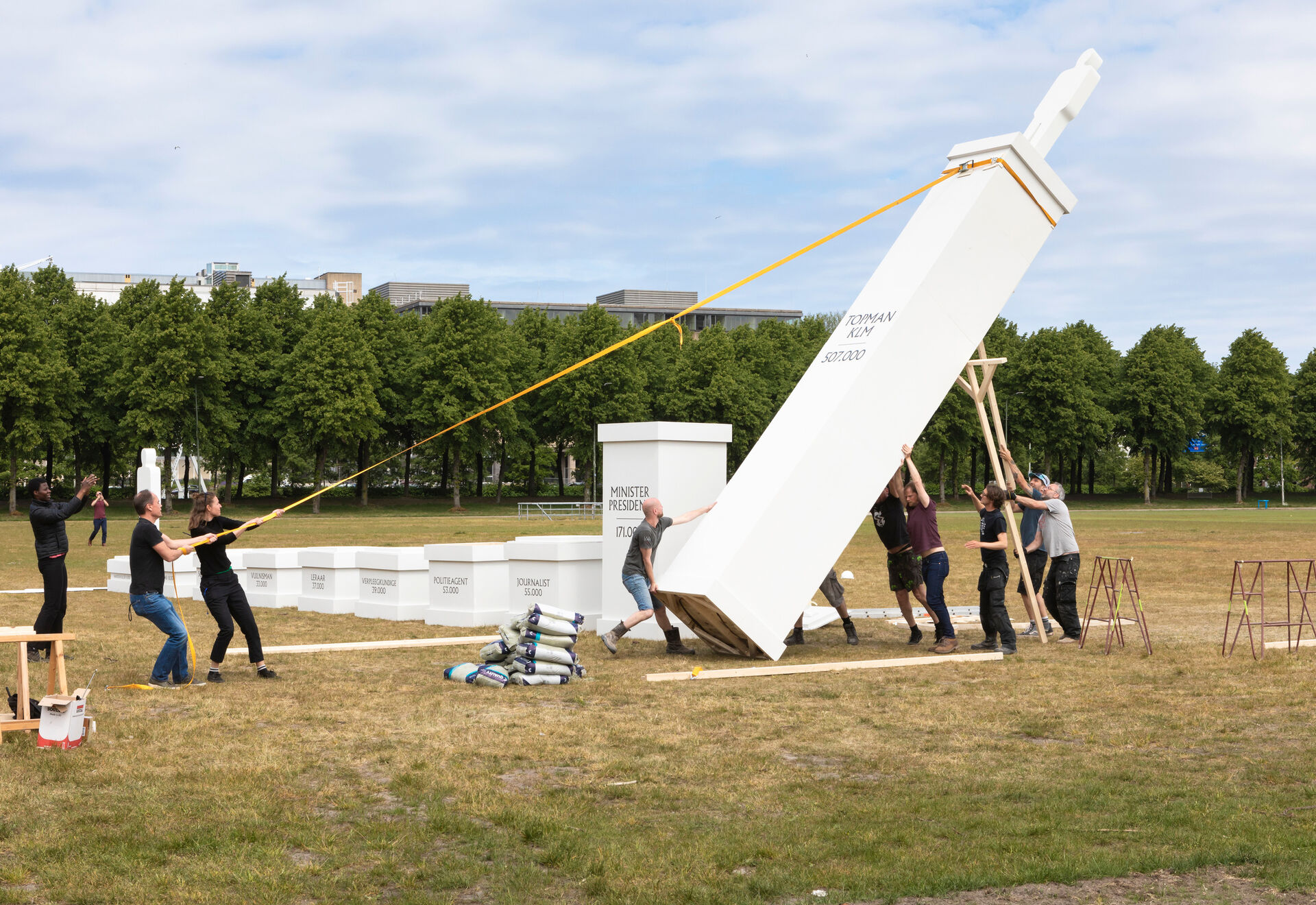
Sjoerd Knibbeler/Platform BK
During the first lockdown and the ongoing government refrain about the ‘heroes’ in the healthcare sector, Platform BK commissioned Yuri Veerman to come up with an intervention in public space that would address the discrepancy between the public rhetoric and the actual socio-economic circumstances of healthcare and other essential workers. We wanted to expose the rhetoric as a simple frame.
In a wonderful collaboration between a number of artists, journalists, unions, and NGOs, the installation and accompanying website, Dit Zijn Onze Helden – For Our Heroes, was launched on May 20, 2020.An interactive representation of the installation can be found at https://www.ditzijnonzehelden.nl Seven ‘essential’ professions, an artist, the prime minister, and the CEO of KLM were put on pedestals, the height of which was determined by their income.
The reactions during the two hours it stood in The Hague were telling. Most passers-by expressed immediate recognition and support – the mother of a shop clerk, teenagers from the surrounding impoverished neighbourhoods, and even the police officers checking our permits. A few saw it as a crude left-wing stunt and attempted to defend the height of the CEO’s pedestal. But all were struck by the clarity of the statement; nothing new was being said, but it reframed something we already knew, thereby opening the topic for reflection and discussion. It was one of the most fulfilling artistic events I’ve ever taken part in. People came and sat down for hours, went away and returned, engaged in conversation with other bystanders and us, the collective makers. ArtWhether the installation really qualified as ‘art’ is open for discussion. Personally, I see it more as an ‘artistic intervention’ in public space, but most onlookers used the terms ‘art’ or ‘artwork’ to describe it. was suddenly relevant to this particular audience of passers-by. The installation offered a simple visual proposal for how to read a complex problem – or, perhaps more accurately, exposed the actual simplicity of that problem.
An interesting aside was the critique from some members of the arts field, who objected that there should have been more emphasis on inequality within the cultural field itself – that is, between the precarious position of many artists and the security of high-income institutional managers. While this is an important gap worth exploring, the critique missed the point of the action, which was to show how artistic labour fits into a larger context and, by doing so, to show solidarity with other precarious groups – to position ourselves relative to our horizontal colleagues rather than vertically, as it were.
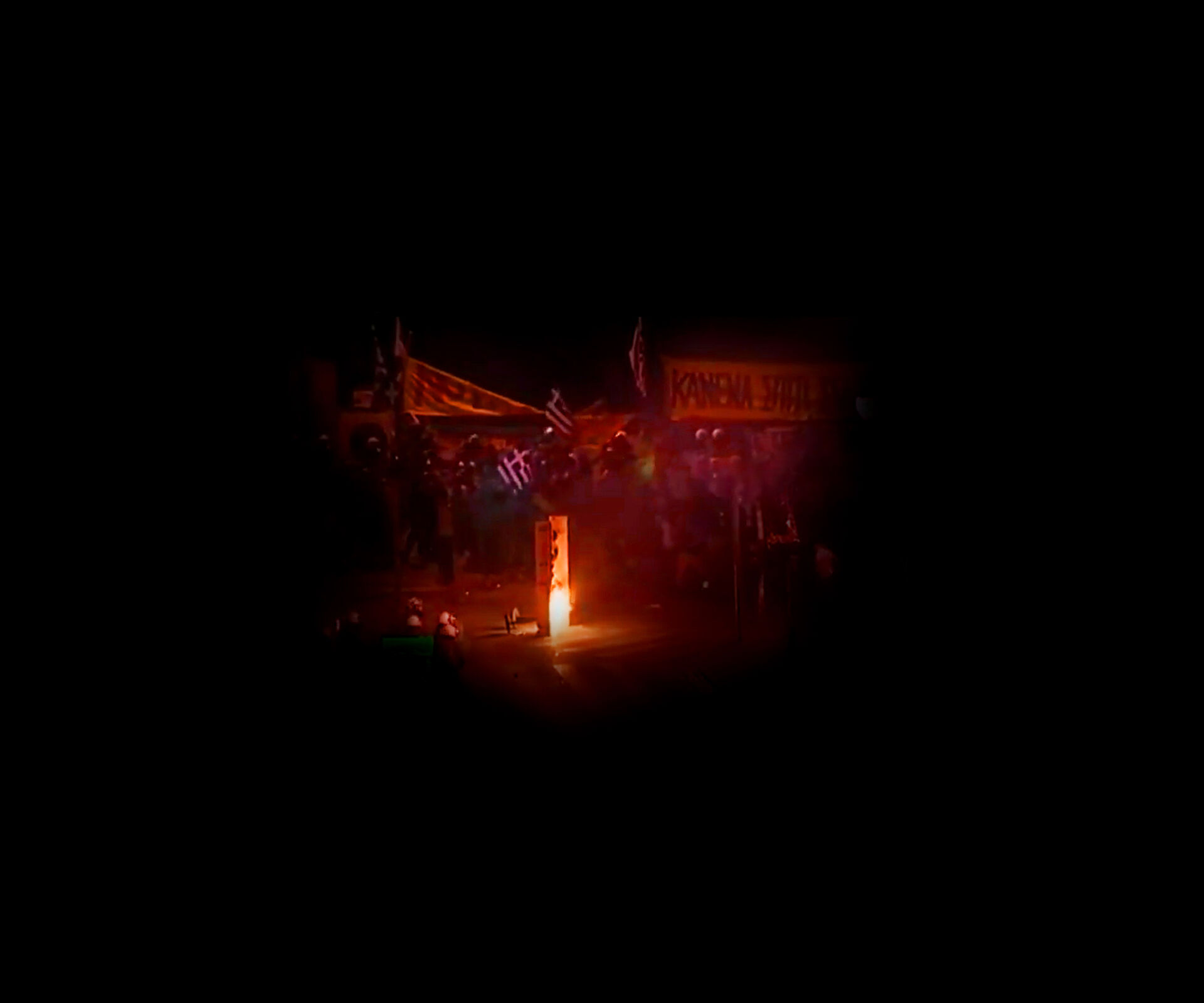
Rune Peitersen, Safe Distance 13, c-print, 30x25 cm, 2014
Ambiguity
As an artist, I feel free to experiment and work as I please – within the given framework of the artist’s position in society. This allows for experimentation with thoughts and positions that challenge the way we see the world and each other on different levels – historically, morally, economically, and so on. This notion of challenging the status quo is often seen as the raison d’etre of the arts from the artist’s perspective, and any limitation or questioning thereof as an infringement on personal or artistic liberty. This is a highly individualistic perspective that is supported by the financial structures of the art market, from galleries and art fairs to collectors and collections.

Rune Peitersen, Safe Distance 23, c-print, 30x25 cm, 2014
However, as representative of Platform BK in the early years, I often found myself in the company of people from outside the art world, including ministers, civil servants, union organizers, and other precarious labour representatives. These encounters made me realise that many of the people I worked with on economic matters – people whom I thought highly of – didn’t quite give the same importance to art as I did. To many, the arts was just one among a growing number of precarious sectors whose problems needed addressing. The role of critical voice and free space was not relevant to these talks, which revolved mainly around economic interests. We were a small wheel in a much larger system.
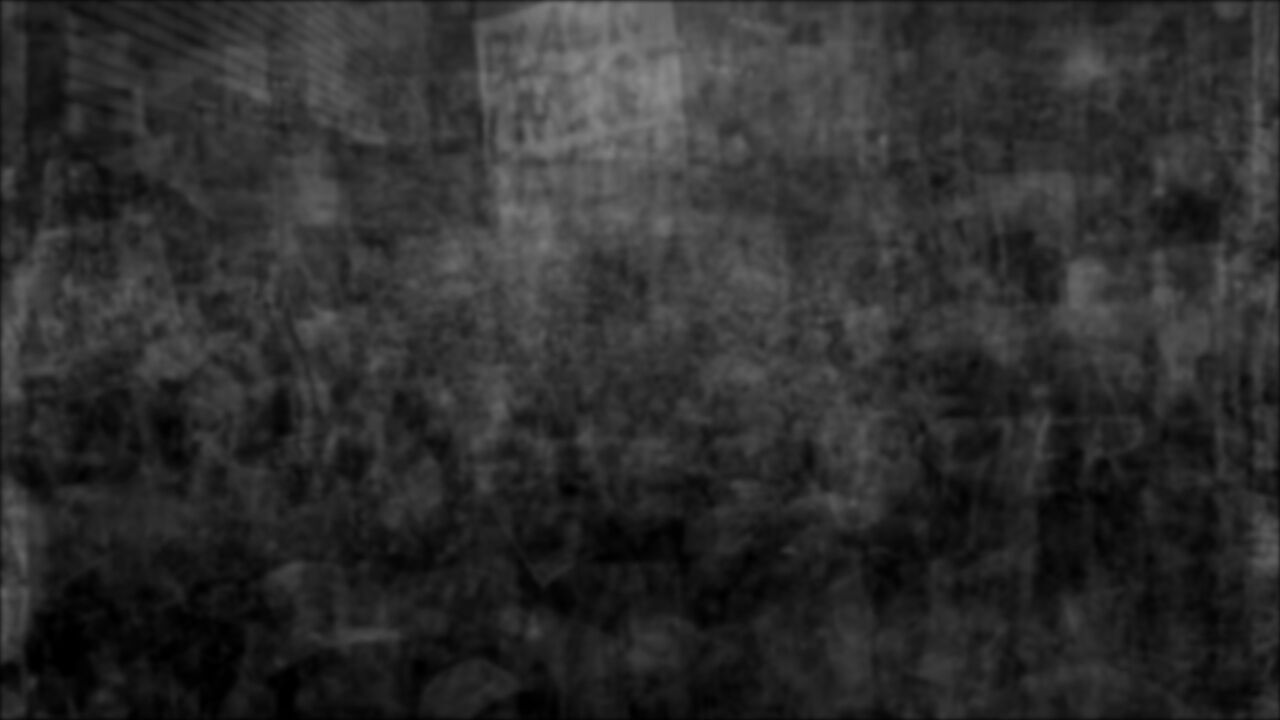
Rune Peitersen, The Voters and the Politicians, screenshot, single channel video, stereo, duration 15.00 min., 2019
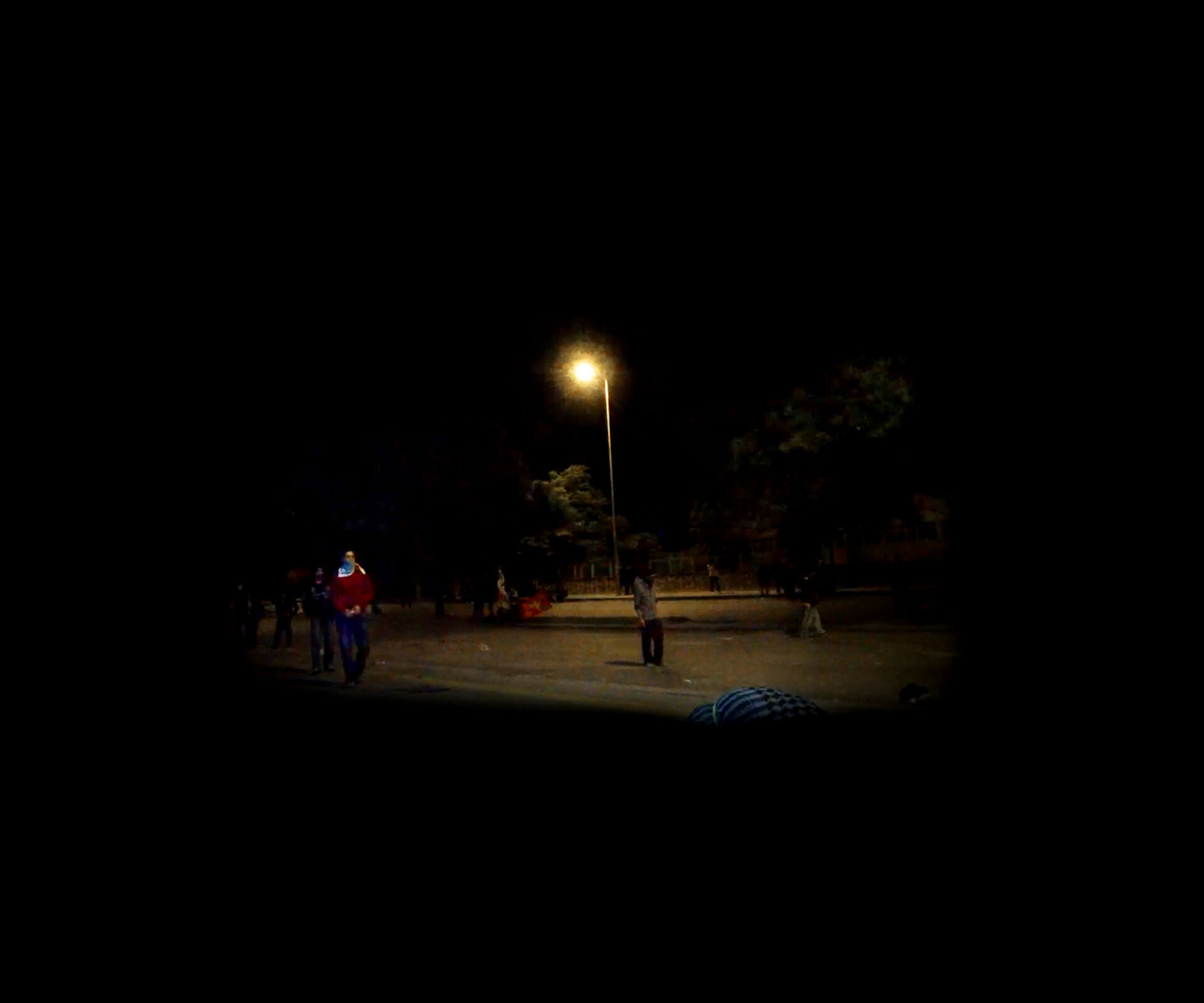
Rune Peitersen, Safe Distance 01, c-print, 30x25 cm, 2014
This idea of being part of a larger system eventually found its way into my own thinking and practice. There’s a claustrophobic element to it, as well as an element of security or safety. In recent works, I look at the systems in which one operates or finds themself, thereby trying to understand how (visual) narratives develop. In Safe Distance (2014–16), I question the position of the viewer of online images, both in the safety and comfort of one’s home and in exhibition spaces. In The Operators and the Targets (2017) and The Voters and the Politicians (2019), I try to describe systems of control in which the nominal protagonists have very little actual agency. I want to understand the motivations behind their actions, because this gives me a way to understand their situation and position within a larger system. These works therefore describe a grey zone, filled with contradictions and without certainties. This zone is ambiguous, and it’s precisely this ambiguity that can offer an entrance to understanding and empathy. Acknowledging that people whose actions I would normally disapprove of are simply caught up in larger systems allows me to empathize with the individuals and reflect on the structures that produce them. Ideally, these people can then become my allies in challenging the system, which then becomes the target of condemnation rather than the individual actors within it.
Whereas certainty tends to seek absolutes and produce mental cul-de-sacs, ambiguity within the artistic space offers a way to acknowledge and rethink one’s own position in regard to a specific question or problem or within a larger system of thought. I guess you could say that confronted with too much ambiguity, the mind is forced to seek greater distance, thereby revealing a bigger picture.
Certainty
Where ambiguity opens up space in an artistic setting, it rarely leads anywhere in a political one. Here, certainty and a clear goal are important. The more certain a person is of their position and ambition, the stronger they stand in negotiations.
However, being too certain often leads to selfishness or dogmatism. When there’s no room for doubt or ambiguity anymore, negotiations between political allies can become mired in complexity. The discourse becomes factionalized and transactional. Factions bring specific conditions or agendas into play, such as economic or historical interests. These usually aim to preserve existing systems of thought or privilege. In that sense, certainty can be seen as a conservative force, a way to envelop new ideas into an existing balance or system, essentially preserving that system.
Changes within a system therefore yield little if any actual change. They’re a way of reshuffling existing conditions rather than rethinking the game. Only when the system itself – the bigger picture – is transformed can one speak of change that has consequences beyond one’s own bubble. Any aspiration for structural change must therefore reach beyond those pursuing it, past individualistic thinking into the realms of justice, morality, and aesthetics.
Need Is Good
Notions of individualism and independence run so deep in both society and our artistic practices that we tend to look for what divides us – makes us or our CVs special – instead of focussing on what we can unite around. But if we’re to change the way we work, the way we live in the art world, and our impact on society at large, we need allies from other fields. Basically, as precarious workers and human beings, we need each other. It’s good to acknowledge that we – I – need others.
I need my family, friends, support structures, and something meaningful to do – sometimes known as a ‘job’. I need the bakery, grocery store, library, plumber, electrician, postal worker, police officer, and fireman. I need the teachers at my daughter’s school, libraries, stable internet, bookstores, museums, and concert halls. I need to know someone cares for all these people and their professions. I need other workers to have access to healthcare, welfare, legal aid, education, and, of course, culture, to ensure they’re not constantly on the verge of a burnout that makes them stressed, emotionally unstable, unable to cope, trigger happy, and so on. What I don’t need is a system that encourages someone to profiteer off them and me. A system that encourages greed over need, short-term, individualistic accumulation over sustainable collective growth. Need, not greed, is good.
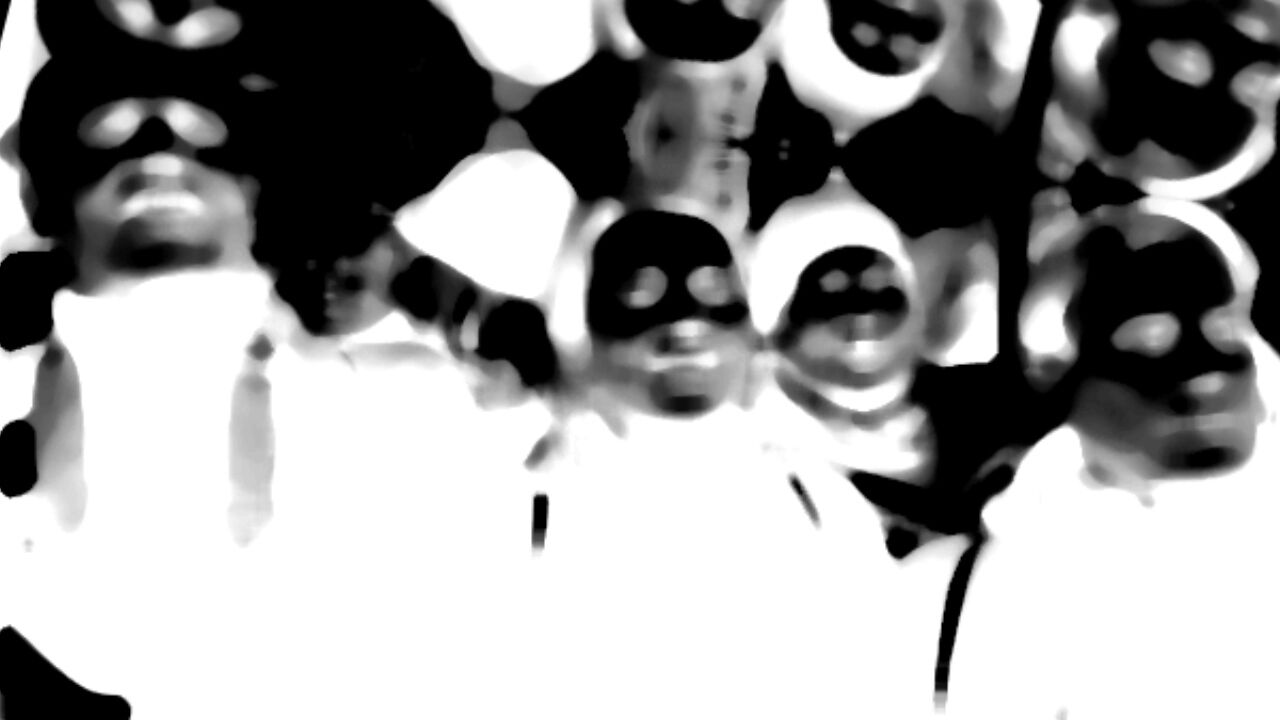
Rune Peitersen, The Voters and the Politicians, screenshot, single channel video, stereo, duration 15.00 min., 2019
Beyond the Bubble
The ‘heroes’ installation was obviously just one small action. In all honesty, it didn’t have the impact we’d hoped for. It did, however, bring about some moments of shared reflection with the onlookers, and it opened a space for political dialogue with people who wouldn’t normally engage with art. It also brought our own precarious position as artists into perspective. The artist stood between the stock clerk and the cleaner – as one artist commented on social media, ‘Yeah, I do feel like a bit of both'.
This feeling of recognition opens up common ground, a place where we can meet our ‘horizontal allies’. It’s easy to befriend someone we agree with, but sameness also presents a risk of agreeing too much, being too certain. The real challenge lies in finding common ground with someone we disagree with. Maybe we should challenge our own certainties, our own status quo, by looking for friends in unexpected places, forging alliances across sectors.
We could look to others to see how they fight injustice. Can we imagine artists or curators taking a knee at an exhibition opening in the presence of major collectors or even royalty? Not as a symbolic or artistic act, but as a gesture of support, an acknowledgement that there’s a world outside the art space that has its own way of fighting systemic injustice – as well as a recognition of the problematic structures that the art world still upholds.
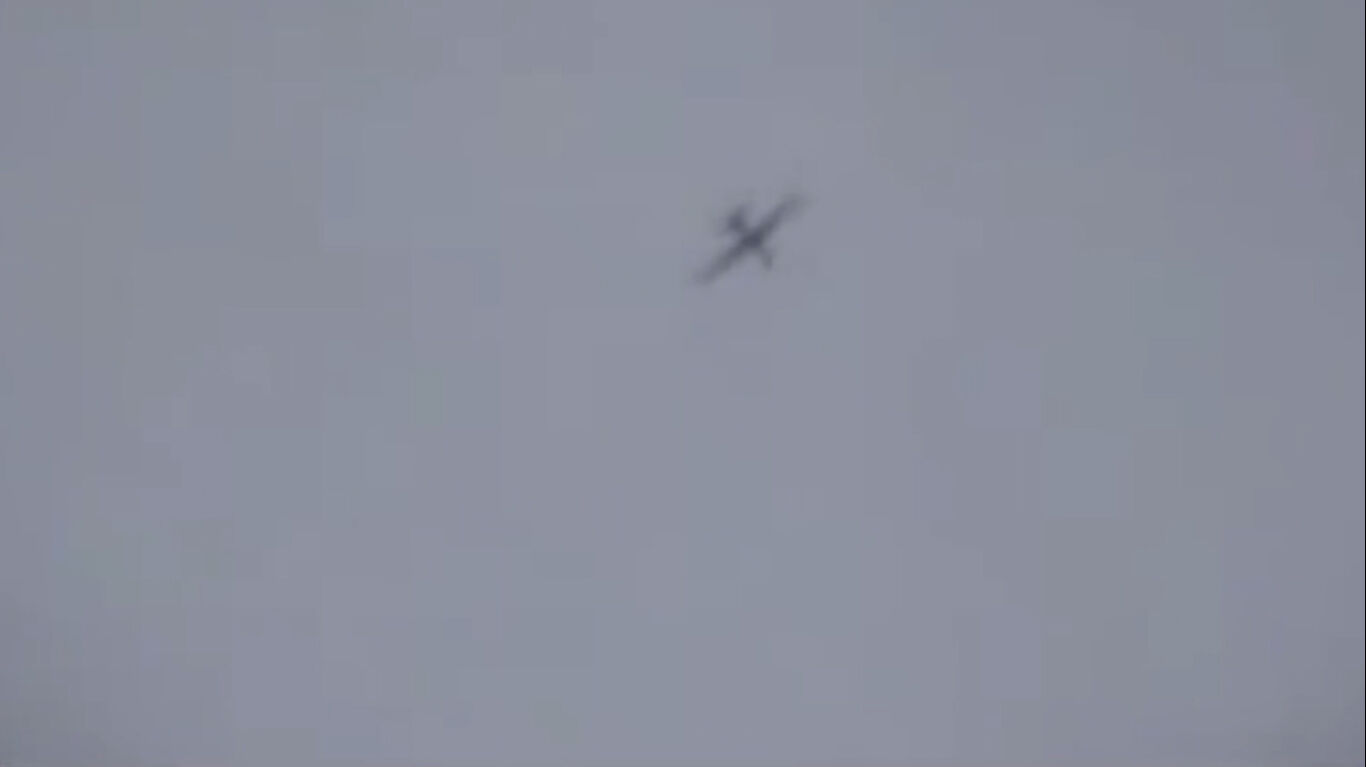
Rune Peitersen, The Operator and the Targets, screenshot, single channel video, stereo, duration 12.25 min., 2017
Operating in a Wider System
Although the art world is very much a system on its own, it’s embedded in and operates within larger systems. However, what sets us apart from other systems or fields is the access to power we potentially have and the skillsets of cultural workers – including the fact that in our practices, we often already seek ‘the abstract’ and are familiar with ways of communicating the ambiguous. There’s tremendous freedom in this position that allows us to go beyond the transactional discourse of practical politics. We can use it to simplify overly complex political discourse or false framing.
In doing so, the cultural field can play an important part in trying to move the societal focus and narrative away from a solely individualistic approach. This doesn’t mean giving up one’s personal practice or feeling forced to make certain kinds of works. It does, however, mean we have to acknowledge our position as individuals within a wider system, and recognize that we need allies if we want to help bring about profound change.
We’re not alone, but we’re sometimes seen as a group of loners. We should remember that when we reach out to others. We should also keep in mind that despite all our privilege and many important questions, we don’t have all the answers. We need to listen to and learn from others, even those we disagree with. Because we need each other. And that’s a good thing.
Conversations with Alina Lupu, Joram Kraaijeveld, and Philippine Hoegen helped me gather my thoughts. They might disagree with every word, but I’m very grateful for their time and insights.